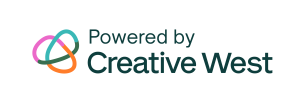Learn how to simplify your grants management process and save more time so you can focus on the big stuff
With all of the paperwork, accountability, and document retention that already comes with grant-making, why are we making our jobs more difficult by having multitudes of programs and lengthy grant applications? Not only is this more work for administrators, it has unfavorable consequences for applicants as well. Many funders like to distribute smaller grants based on the belief that they can reach more applicants. Although this may sound like a good policy, diluting funding actually has the opposite effect. It decreases the net grant and, in turn, decreases impact. Offering many small project grants is inefficient grant-making. Let’s look further at calculating net grant and learn how you can utilize this to simplify your grants.
Grant Amount – Total Grant Cost = Net Grant
In order to calculate net grant, first you’ll need to find the total grant cost. You may need some assistance from an applicant in order to calculate this. Our friends at PEAK Grant Making further breakdown total grant cost as the following:
Total Grant Cost
- Calculate the total number of hours spent preparing the grant:
- Hours spent researching the opportunity, writing the LOI, writing the application, communicating with the funder, and any other miscellaneous grant-related activities
- Multiply total hours by the hourly rate of the person doing the work = Total Grant Cost
Take a look at PEAK’s post on Net Grants for more details on how to calculate net grant. Although this is usually used by applicants to calculate the value in applying for an opportunity, we strongly encourage administrators to utilize this calculation for each of their funding opportunities. Net grant is a great way to gauge the efficiency of your grant applications and start to simplify your grants.
Let’s talk real examples:
Say a funder offers 10 different types of project grants and awards approximately $5,000 for each opportunity. The average net grant for one of their project grants is $2,500. That means that applicants are really only receiving $2,500 towards implementing their mission and impacting the community. Fifty percent of the award is eaten up by overhead!
Break the cycle and start simplifying your grants
Taking a minimalistic approach to your grants management increases your impact. We know how much time and energy you put into creating your grant applicants, managing the application process, and paneling. Ask yourself who is really benefiting from having separate grant programs and multiple project grants? Could there be a smarter way to have the same–if not more–impact?
The answer is general operating support
Grant Makers for Effective Organizations defines general operating support as grants in support of a nonprofit organization’s mission, rather than specific projects or programs. General operating support requires an extra level of trust from the funder. However, when implemented, it creates the most impact for both applicants and funders. General operating support provides nonprofits with the flexibility to implement their mission and to take risks with programming. This is synergy for innovation.
How to increase trust
Many funders’ hesitation with general operating support is the perception of little accountability. Some funder prefer funding an individual project as there are more tangible results, the project happened or it did not. This makes it easy to see direct results and pull funds back when an organization is not fulfilling their project. This does not help the organization grow and it limits creativity and risk taking.
There can certainly be accountability with general operating support It does, however, require an increased level of trust with applicants, as oftentimes you will be making a larger investment in an organization. There are ways to have accountability with general operating support, you may just have to think about adjusting your current processes. With less administrative time managing multiple project grants, program managers and panelists can undergo a more in-depth review of general operating support applicants. Such a review may include: Visiting the organization’s website to view how they present themselves to the public, utilizing Guidestar to cross-check basic organizational information, and reviewing the organization’s 990 for financial viability. It is time to start thinking about how you could simplify your grants programs and maximize the impact of your funding opportunities.
Tools to try:
- Determine your net grant: Send a short survey to a sample of applicants asking for the amount of time it takes to apply to your grant opportunity. You could offer a reward for survey-takers to show them you value their time.
- Analyze your current grant offerings:
- Are the same organizations applying for multiple projects?
- Give general operating support a try!
- Consolidate grant programs, especially project grants.
- Does it make sense to offer multi-year support?
Want to see how GO Smart can help you simplify your grants? Click here to schedule a demo!


